Grandson of a slave, Freddies Stowers an African-American hero was born in Sandy Springs, South Carolina, on January 12, 1896, during the first world war he was a corporal in the 371st Infantry Regiment, 93d Division(colored). He died in action on September 28, 1918 near Ardeuil-et-Monfauxelles in the Ardennes France.
He was posthumously awarded the Medal of Honor on April 24, 1991 - seventy years after he was killed in action. He was the only colored American soldier to receive the Medal of Honor for WW1 action, until June 2, 2015 when Henry Johnson, from the 269th infantry Regiment,posthumously received also that Distinction.
Established during the Civil War the Medal of Honor is personally presented by the President to the recipient, if alive, or in the case of posthumous award to the next of kin. During WW1 121 MOH were awarded of which 34 posthumously.
On April 24, 1991 Freddies Stowers’s sisters Georgina Palmer and Mary Bowens received in his name from President George H.W Bush the Medal of Honor during a ceremony in the White House.
Although the 93rd division arrived in France as part of the AEF (American Expeditionary Force) two regiments 371st and 372nd were detached to the French Army 157th division called the “Red Hand Division” under the command of the French General Mariano Goybet.
The “Red Hand” was the emblematic figure of the division’s pennant and was worn by all ranks asshoulder badge.
157th division occupied the Argonne-Vauquois forest sector, Hill 304, and was engaged with the 4th army to the Meuse-Argonne offensive. And then moved to the Ardennes.
Early on the morning of September 28,1918Stowers' company was ordered to assault hill188, a heavily defended hill overlooking a farm near Ardeuil-et- Montfauxelles in the Ardennes. The German defenders offered stiff resistance with mortars and machine guns, the American advance was not halted, and the Germans communicated their surrender with verbal and hand signals. But that was a ruse and as Stowers’s company drew near the German trenches, machine guns openedupagain. Within a few minutes the compagny’s strength was reduced by half, officers and NCO went down, Corporal Stowers took command of the remnant of the platoon. Leading a charge against a machine gun nest he was struck by bullets, kept going and was struck a second time. He collapsed from loss of blood but ordered his men to keep going and take the German trenches. That was done but meanwhile Stowers died from his wounds on hill 188.
He is buried with 133 of his comrades at the Meuse Ardennes American Cemetery and Memorial in the village of Romagne-sous-Montfaucon.
On November 11th, 2015 at 11 hours a bronze statue of Corporal FreddiesStowers was dedicated in the campus of the Anderson University, Anderson, South Carolina.
Lastly,we conclude with a passage of the Medal of Honor Citation read by President Bush on April 24, 1991:
“Corporal Stowers' conspicuous gallantry, extraordinary heroism, and supreme devotion to his men were well above and beyond the call of duty, follow the finest traditions of military service, and reflect the utmost credit on him and the United States Army.”
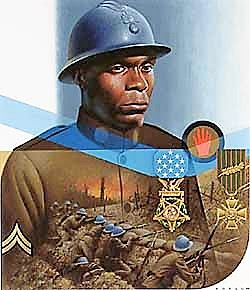
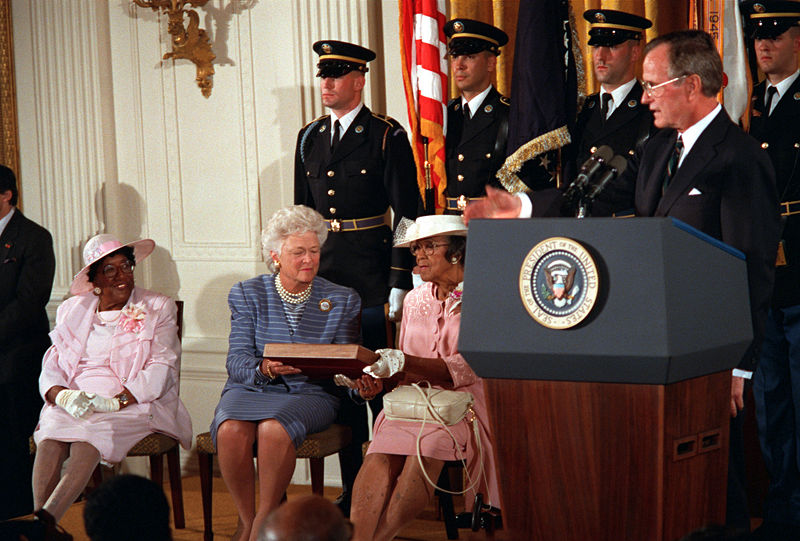
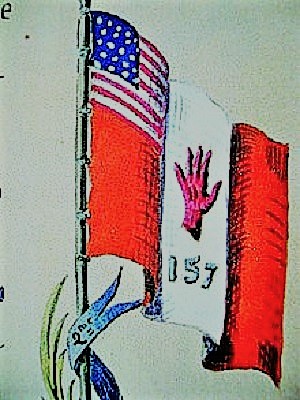
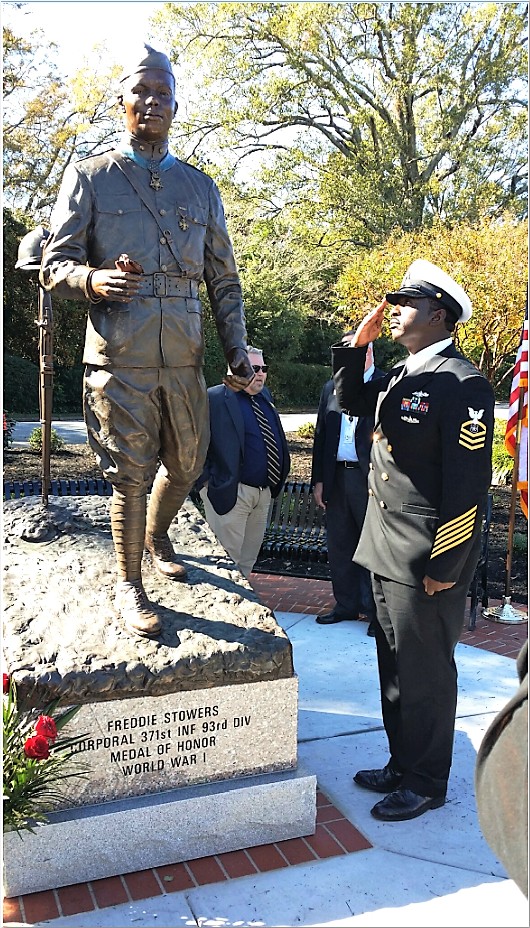
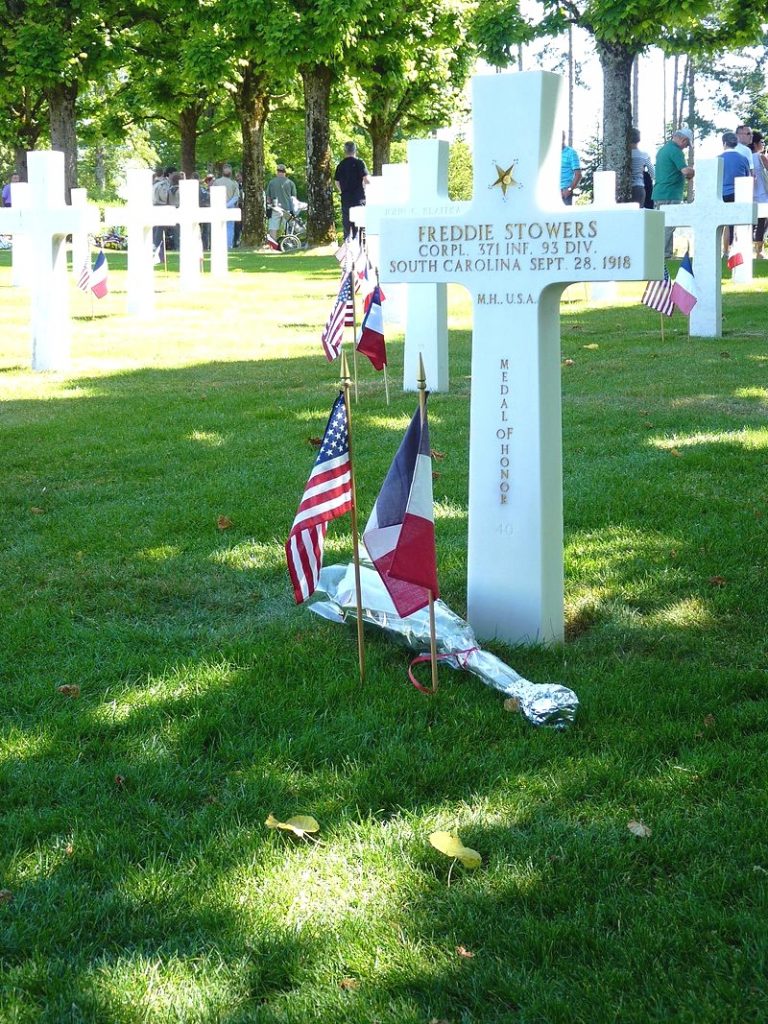

0 commentaire Laisser un commentaire
Les commentaires sont fermés.